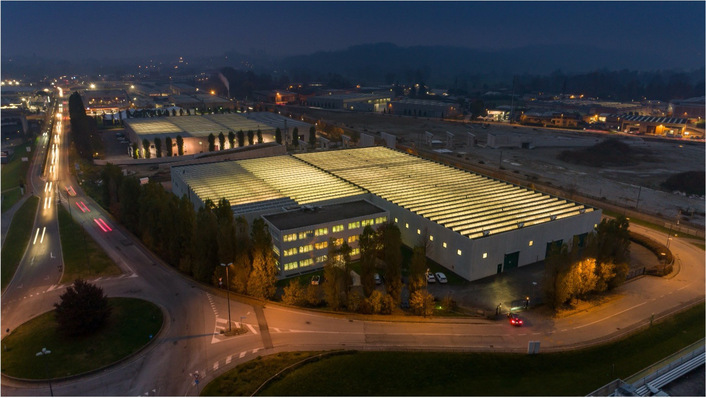Cutting glass is an everyday action for all of us involved in the finishing of flat glass. We cut float glass, ornamental glass, laminated safety glass, toughened safety glass. But wait a minute, it is impossible to cut tempered glass will be the objection of anyone who has ever tried it: Toughened or tempered glass shatters immediately when you so much as try to cut it in any way.
But a new development by the company Coherent I rofin overcomes this limitation that was previously considered unsurmountable. A new technology now makes it possible to cut tempered glass. The glass is not scored with a cutting wheel or processed with a diamond tool as is the traditional way of cutting glass. The new technology is based around using a laser to cut tempered glass.
What is the process capable of?
"The process works very well, is reproducible and we have already used it to cut tempered glass panes of thicknesses up to 8 millimetres. We have not yet tried thicker glass, but there are no system-related limitations," the researchers for Coherent I rofin point out. For demonstration purposes, GLASWELT was in Coherent I rofin's application laboratory. There, a normal sheet of toughened single-pane safety glass was placed on the work surface of the laser cutting system and the process started.
A pulsed picosecond laser from the Coherent product portfolio moves across the glass - and at first not much can be seen. But once the process is complete, the glass pops apart at the cutting interface and comes apart into two separate pieces of the original glass.

Rofin
The process in detail
So-called filaments are introduced into the glass with the help of the laser. The glass is virtually perforated. Applied correctly, this process now allows the cutting of thermally toughened glass in such a way that it is not destroyed in the process.
See also this article: Laser processing of glass
For the tempered glass cut in this case, the filaments thus introduced into the glass are about 2-3 millimetres long, which also depends on the glass thickness, and have a diameter of 0.5 to 1 microns. The space between the individual filaments is so small, typically about 5 microns, that this creates an almost continuous cut.
So far, the laboratory can already achieve speeds of up to 500 millimetres per second at a glass thickness of 2 millimetres. By increasing the laser output, this can also be easily applied to thicker glass.
Editor's note: This article is a translated excerpt of a longer article that originally appeared in the German print edition of GLASWELT.
Did you know about the GW News newsletter?













